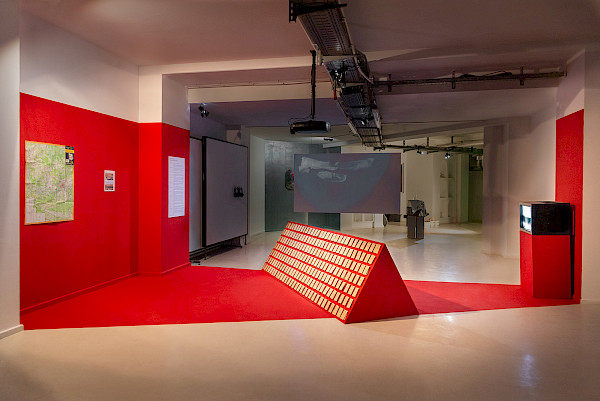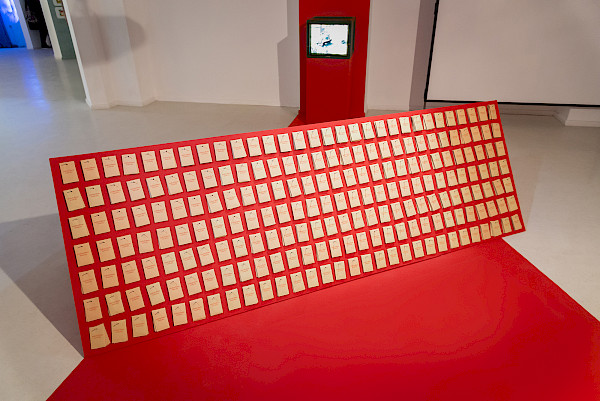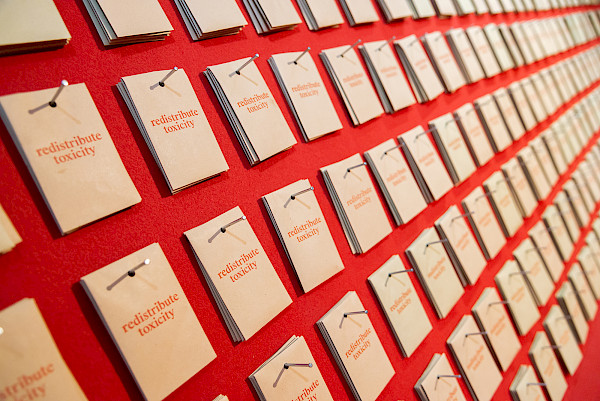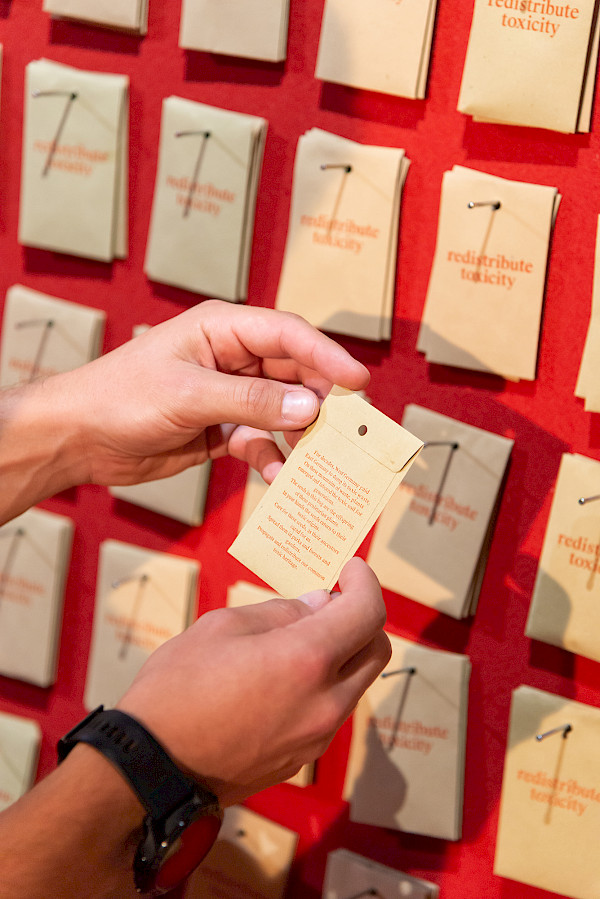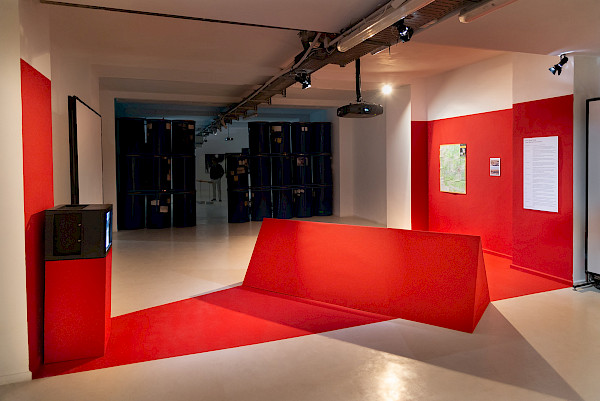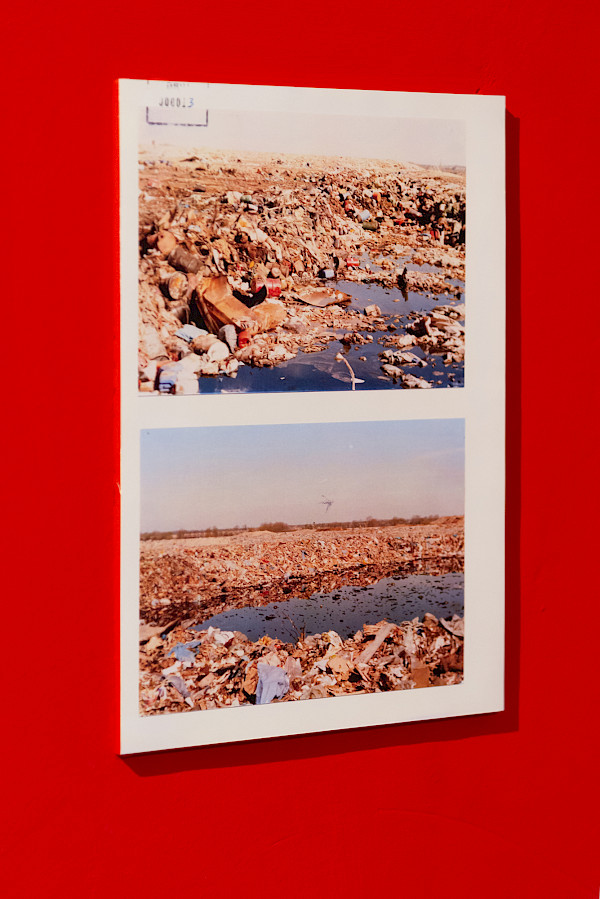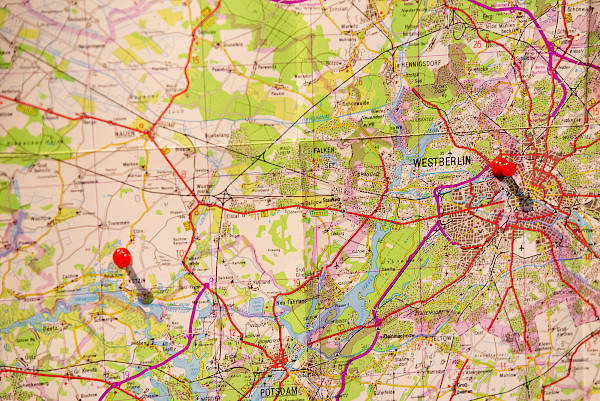redistribute toxicity
2019
October 19-December 1, 2019
SAVVY Contemporary – The Laboratory of Form-Ideas, Berlin, Germany
At the center of the installation redistribute toxicity is a triangular red display with bags of seeds collected in the nature reserve surrounding Vorketzin toxic waste site. This landfill emerged from a deal struck between former West and East Germany in 1972, when the West began to pay the East to dump its toxic waste on its land – a process which we see today magnified in the form of the global toxic waste trade.
The seeds enclosed in the bags are inheritors: seeds that descent from plants that were forced to become “indigenous” to toxicity. A generation of proletarian plantae (plant workers) that labored the soils and cared for the toxicity of former West dumped in former East. In this project, the seeds return to the place where the toxic waste was outsourced from in the first place. As such, redistribute toxicity invites for reciprocal care through redistribution and propagation of toxic inheritance. Not to outsource, but to practice co-existence by insourcing our toxicity. Visitors were encouraged to take a bag and to redistribute the seeds in gardens, parks and forests.
The installation further consists of various documents mapping the toxic waste trajectory from West to East Germany since 1973. Archival film footage from 1973 shows the Berlin wall becoming porous: not for humans, but for trucks filled with hazardous waste crossing the barrier effortlessly. A photograph taken in the 1980s in Vorketzin depicts two pits filled with hazardous waste. A geographical map details the relation between SAVVY where the toxic seeds are redistributed and the location of the historical landfill where they were collected. A timeline by Jonas Stuck details key events in this embryonic example of the global toxic waste trade.
-
Project by:
Jonas Staal in collaboration with Jonas Stuck
-
Project team:
Jonas Staal (artist), Jonas Stuck (researcher), Caroline Ektander (curator, researcher), Antonia Alampi (curator), Zayaan Khan (seed collection leader), Ola Zielinska (architect), Elsa Westreicher (designer), Jasmina Al-Qaisi (production SAVVY), António Mendes (construction)
-
Commissioned by:
SAVVY Contemporary – The Laboratory of Form-Ideas, Berlin (DE)
-
Supported by:
Mondriaan Foundation, Amsterdam (NL)








